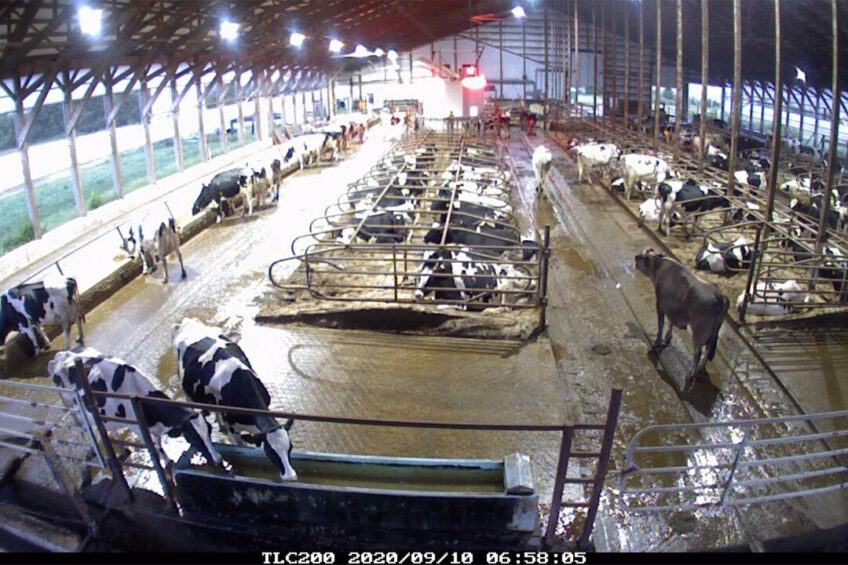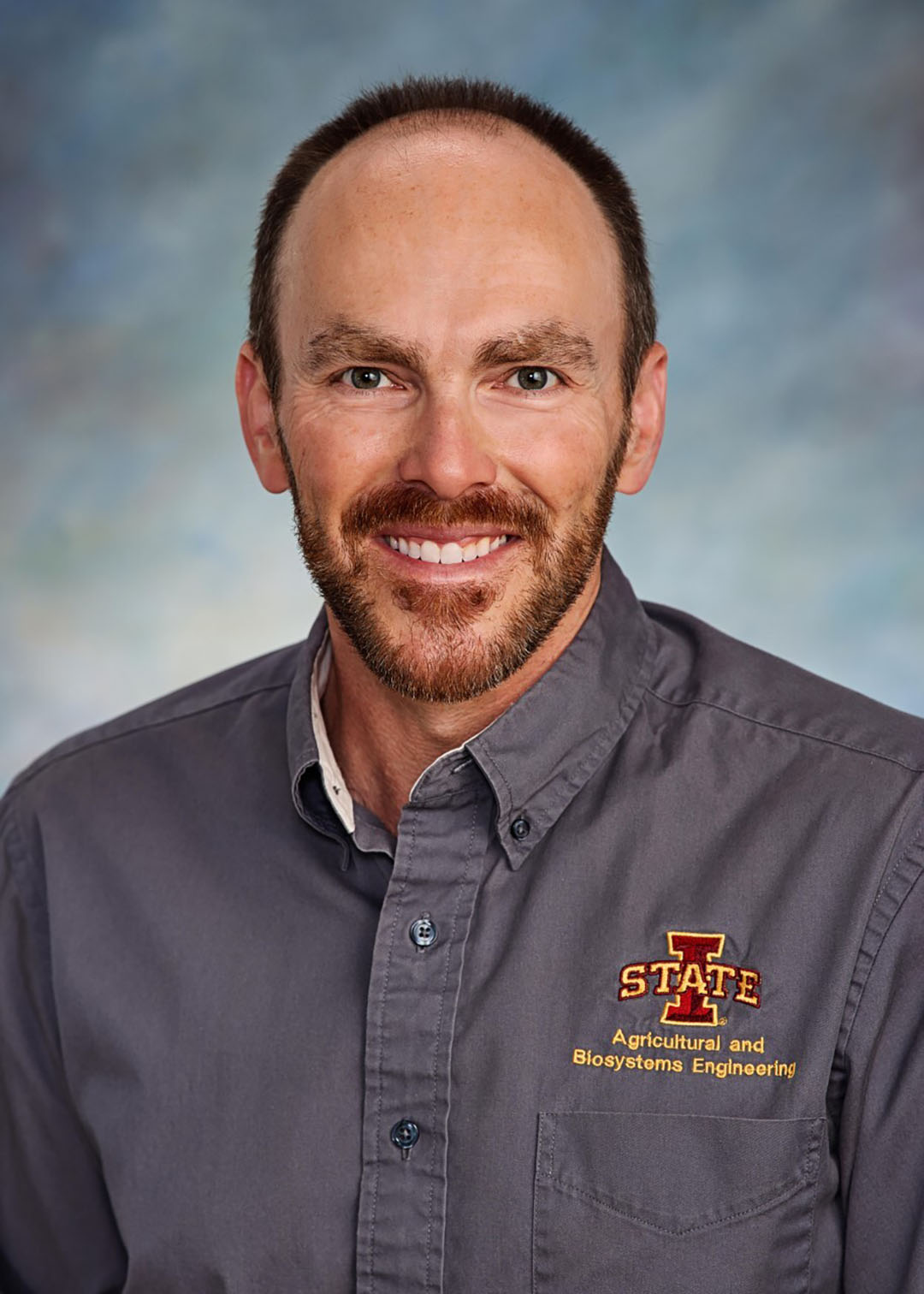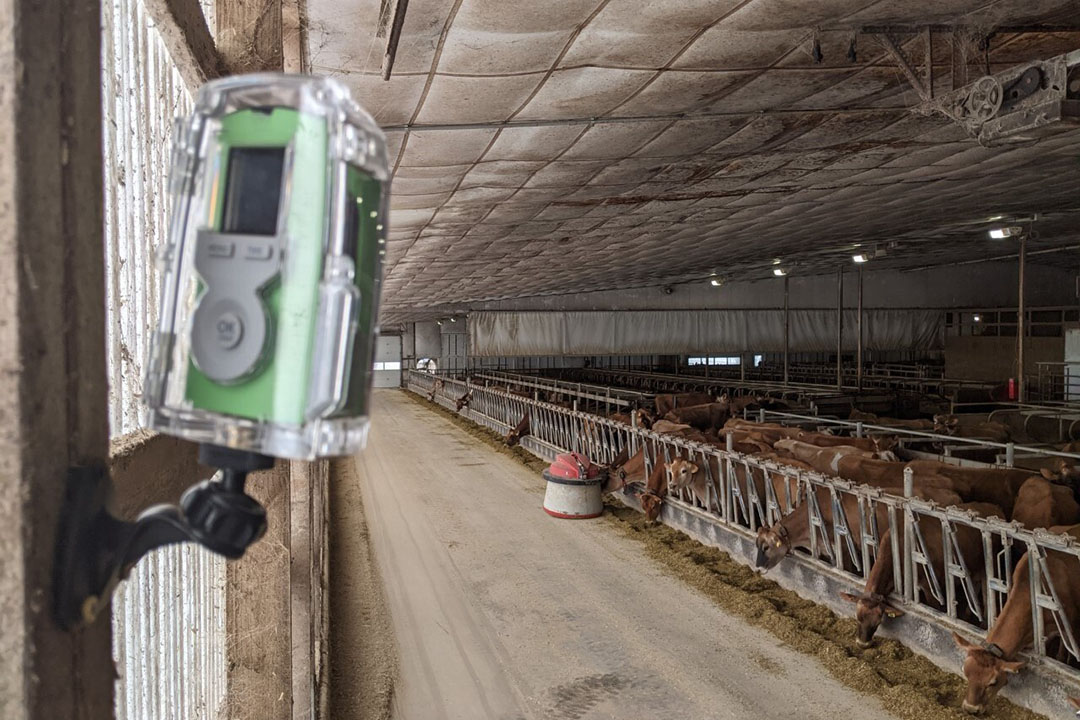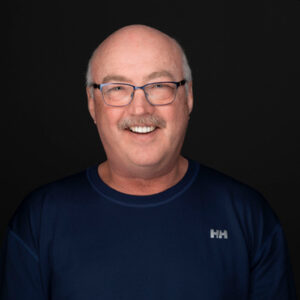Advantages of time-lapse photography in dairy cow barns

Modern dairy farms strive for more efficiency and production to help build financial stability. Still, to maintain forward momentum, they must balance these dry data-filled pursuits with actual true-to-life animal welfare realities. It raises a serious question: how can producers bring these 2 worlds closer together?

Iowa State University Extension has been examining and testing the use of time-lapse photography in dairy barns to help reduce the gap between this gathered data and the real world. Brian Dougherty, Iowa State’s field agricultural engineer, explains that their programme has recently purchased cameras and associated equipment using a risk management extension agency grant. The cameras have since been installed on various farms throughout his area.
“Video cameras have been available for use in barns for years, and while real-time access is great, the main downside is that they’re more expensive,” he says. “Plus, since a farmer isn’t always there to monitor them, it takes extra time to go back through hours of footage to see what happened previously. Time-lapse cameras speed up the process. It’s possible to see situations occurring we might not otherwise catch.”
Cost, settings, and installation
Prices for time-lapse cameras have decreased, and they’re now available in the US$ 150 to US$ 400 range. Dougherty recommends, at minimum, a 16 GB card to ensure enough room for video and image viewing on a smartphone or computer. Newer models automatically adapt pictures into time-lapse photos without extra software. Most come equipped with a battery or electrical capabilities, and some feature a front video screen allowing the user to see exactly what the playback will show. Exterior cases come in various designs, but Dougherty suggests one with the camera built in to keep moisture and dust out.
He says vibration from fans (for barn ventilation) can cause footage to appear shaky, so it’s important to mount the camera securely away from excessive movement.
“Given how cheap these cameras are now, if we catch one small thing wrong, for example, feeding issues, the expense is made back quickly,” he said. “A full day’s activity can be watched in 10 to 20 minutes depending on frame rates.”
Dougherty says 10 frames per second during playback works well with a photo capture interval of a few seconds for free stall movement monitoring and up to a few minutes for feed bunk activity.
Understanding behaviour
Dan McFarland, agricultural engineer at Penn State Extension, has worked extensively with time-lapse photography in dairy settings and believes that to make the best use of its capabilities it’s vital to first understand the breakdown of a typical cow’s day. His studies have shown that the average cow spends 3 to 5 hours eating, 12 to 14 hours resting and 7 to 10 hours ruminating. The remainder of its day is divided between socialising, moving from place to place and milking.
In a recent precision technology webinar hosted by Iowa State University Extension and Outreach, he explained that resting time is one of the most crucial keys to productivity. Data from milk yield analysis shows that the top 10% of cows spend roughly an additional 2 hours per day resting compared to the average cow.
He considers time-lapse photography an excellent tool to help gauge how a herd is doing with resting times. “Resting reduces stress and injuries, plus increases cleanliness, production and longevity,” he said. “Look at stall size and structure if resting time is too low. Are stalls large enough or structured to be supportive of resting? And to get a clearer sense, use the cameras to look at stall use more than once during the day.”

Metrics for accuracy
Numerous metrics have been designed to measure various aspects of time spent in different activities.
Using time-lapse photography, a cow comfort index determines adequate resting times throughout the day. To calculate this index, the total number of cows lying in stalls is divided by the number lying, standing or perching in stalls. McFarland says the value should be greater than 0.85.
A stall standing index is an indicator of animals standing for no reason. It is established by dividing the total number of cows touching stalls into the number standing in stalls. “We like to see that result being less than 0.2,” he said. “If it’s higher, it indicates that lameness may be an issue.”
A stall use index calculates how well stalls are being used and is typically measured 1 to 3 hours after the return from the morning milking. It’s determined by dividing the number of cows not eating into the number lying in their stalls. According to McFarland, the result should be greater than 0.75.
For all indices, time-lapse photography can be used by pausing playback or taking screenshots at various times to count animals and calculate index formulas. Results provide an accurate indication of condition desirability.
McFarland admits that these indices are skewed if stocking densities are too high. “Density should be around 1 to 1.2 cows per stall,” he said. “If there’s too much competition, even when the indices appear good, they’re worthless with too many cows to provide an accurate picture.”
Additional benefits
Time-lapse photography can also identify poor neck and brisket rail placement, bedding availability, mattress limitations, feed levels and push-up requirements, automated equipment reliability, and time away during milking.
“Feed availability is a big one,” he said. “It only takes 20 to 30 minutes for the first cows arriving at the bunk to push it out of reach. Focus on when they want to eat and watch if more push-ups are needed. Remember, they will choose rest rather than eating when both lying and feeding times are limited.”
McFarland explained that time-lapse has also been beneficial in identifying heat stress challenges as cows seek to face air movement and move toward fans in hot weather. During playback, some farmers have recognised excessive bunching. After changing fan placements for opposite direction flow, resting comfort indices were stabilised.
Dougherty says he’s seen strong interest in using the cameras, with most people valuing the feed bunk information, including night-time shortages or a lack of push-ups. Some have observed extended daylighting system timers not functioning properly.
Regarding technological improvements, he notes that while smartphone apps allow viewing from anywhere by simply logging in, accessing footage from cameras without physically pulling the SD card would make it even simpler.
To wrap up his portion of the precision webinar, McFarland reinforced the need to become familiar with typical cow behaviour to make the best management decisions when using time-lapse photography.
“Be objective when watching the footage,” he stressed. “The abnormal can become normal if repeated over and over. Try to use before and after index calculations and, finally, expect to be surprised.”






